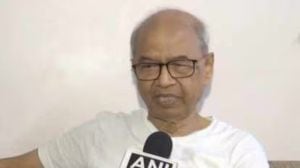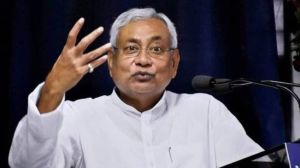The United Colours Of Saffron
...

| Vishva Hindu Parishad and Indian Politics By Manjari Katju Orient Longman Rs 350 |
Over the last decade, the organised Left has ceded the protest space in Indian politics. Where it is the traditional duty of Left-leaning parties to lead marches and continually sound dissenting voices against the establishment, today it is the saffron forces led by groups such as the Vishva Hindu Parishad and the Bajrang Dal that have taken on the mantle of a protest movement in their crusade to Hinduise democracy and society. Whether in protests against films, the visit of the Pope, social practices and economic policies, VHP cadres are in the forefront of these agitations, colouring them, sadly, with religious fervour and often obscuring the real point. Protests against pornography or against globalisation, for example, when they get co-opted by the VHP, lose their effectiveness and become simply campaigns to advance a narrow Hindu cause.
Yet, given its significance, the VHP movement has not been studied as thoroughly as it needed to be, not only for the transformative power it has had over a diverse section of Hindu thought but also for the manner in which it has, many are agreed, successfully altered the Nehruvian definition of secularism. Vishva Hindu Parishad and Indian Politics is a slim book, and a lucid, straightforward narrative of the manner in which the VHP transformed itself from a loose, low-profile group formed to basically aid the RSS in preserving Hindu dharma in the diaspora as well as check Christian proselytisation among tribals to its present avatar as a trenchant protester against the entire edifice of the Indian Constitution.
Katju tries to keep her voice as non-ideological as possible. Although she notes the fascist tendency of the VHP in its subversion of the principles of Indian democracy by insisting that Hindus form the “permanent majority” and by centering Indian history on the life of “the Hindu”, she also notes the manner in which it calibrates its speeches by appealing to different constituencies on different platforms. While the aggressive Ram rhetoric is used in North India, in the Northeast she finds the message is much more activist and welfarist. She emphasises the fact that the VHP is born not only from communal politics but also from the large sections who find themselves left out of the prosperity
of middle-class India and the successful green revolution farmers.
The book is mercifully free of the numbing academic speak with which scholarly inquiries into Indian politics have become associated. Instead the simple linear tale moving from the foundation in 1964, the pre-Hindutva phase, the radicalisation wrought by the Meenaskshipuran conversions of 1981 to the demolition of the Babri Masjid is fluently written, although in certain parts, reads something like a newspaper report.
The hate-filled ideology and violent actions of the VHP as well as the Bajrang Dal are interpreted as part of the RSS plan to consolidate the Hindu community for the sake of electoral benefit. In this context, Rithambhara’s technological extremism appears as a master performance to seek a mass constituency rather than a stance born from personal conviction. The book neglects the individual biographies of the chief actors in the VHP drama yet provides examples of their immense talents in pulling crowds. Notwithstanding mobilisation, however, Katju concludes that that the VHP’s abiding legacy to India will be schism, division and communal polarisation and the overall agenda of Hindu rashtra will never bear fruit because of the diffuse jelly-like nature of Hindu society.
This is perhaps the first straight look at the VHP’s politics without casting it as a lab rat in larger studies on “communalism”. The VHP emerges as a socio-economic as much as a political movement whose anti-Christian and anti-Muslim identity is powerful in the short term, yet limiting in a longer term.





- 01
- 02
- 03
- 04
- 05


























